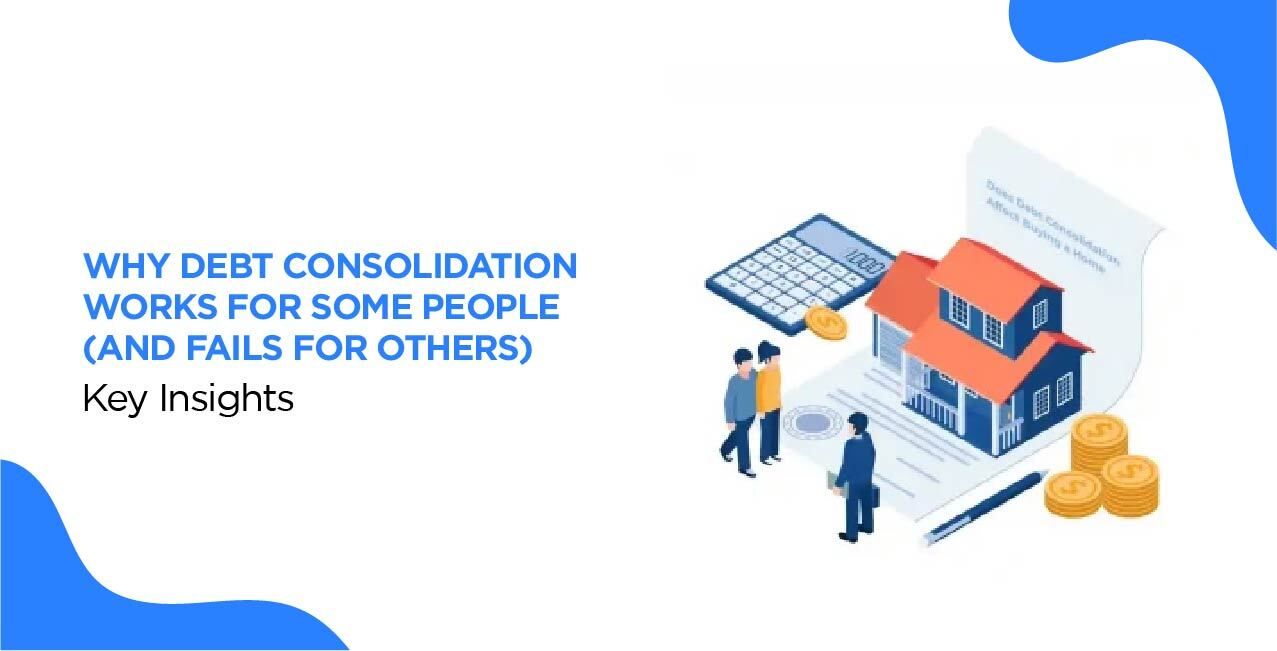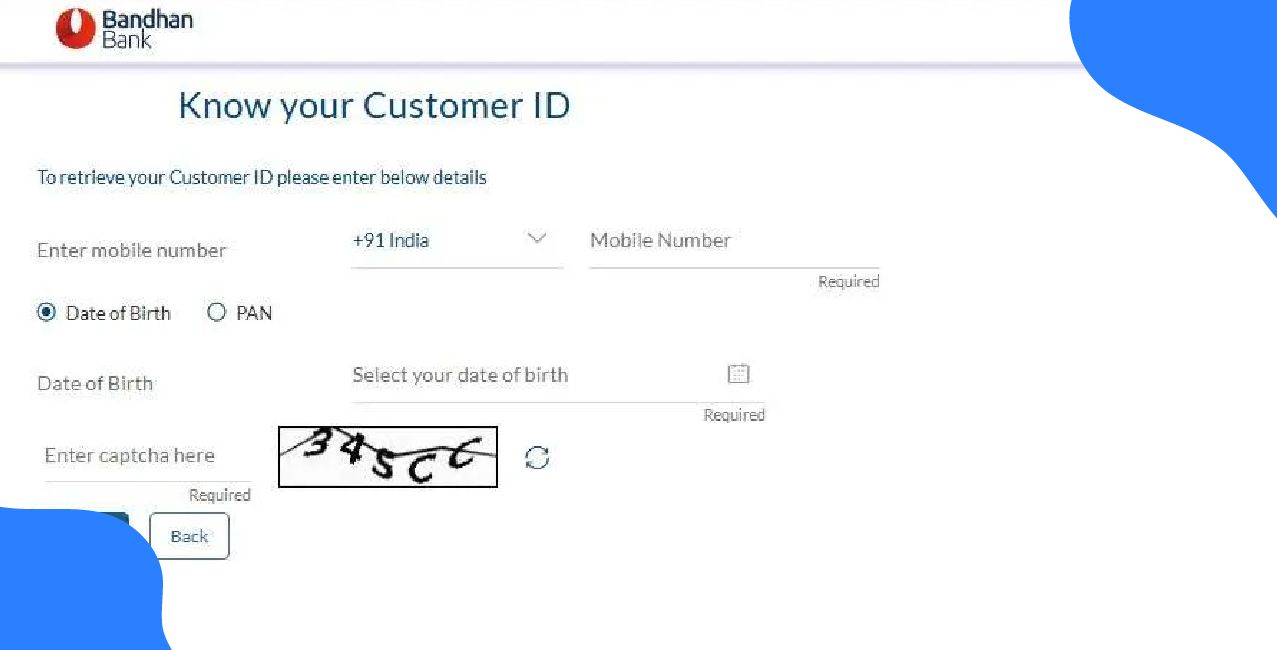
Author
LoansJagat Team
Read Time
8 Min
02 Apr 2025
Why Debt Consolidation Works for Some People (and Fails for Others) – Key Insights
Imagine you're planning your dream wedding. The venue is set, the guest list is ready, and the excitement is in the air. However, when you tally up the expenses, you realise you're short by ₹5,00,000. To bridge this gap, you should consider taking a personal loan. But with varying interest rates, how do you get the best deal?
For instance, as of March 2025, HDFC Bank offers personal loans with interest rates starting at 10.90% per annum, while ICICI Bank's rates begin at 10.85% per annum. With such a broad spectrum, securing the lowest possible rate can reduce your financial burden over the loan tenure.
This makes it even more crucial for borrowers to present a strong financial profile to access favourable interest rates.
Factors That Affect Personal Loan Interest Rates
Getting the lowest personal loan interest rate isn’t just choosing the right lender. Your financial profile plays a significant role in determining what rate you qualify for.
Lenders assess multiple factors before approving a loan—your credit score, income stability, loan amount, tenure, debt-to-income ratio, and even the type of lender you choose.
Even a slight difference in interest rates can save you lakhs or cost you lakhs over time. For instance, a ₹10,00,000 loan at 10.5% for 5 years will have much lower EMIs than the same loan at 14% for 7 years.
Let’s explore these factors in detail.
Credit Score: How Does Your Score Determine Your Interest Rate?
Your CIBIL score tells lenders how reliable you are in repaying loans. Most banks and NBFCs require a minimum score of 700 for competitive rates. A higher score can help you secure rates as low as 10.5%, while a lower score can push it up to 16% or more.
For example:
- A 750+ credit score may get you a 10.5% rate on a ₹10,00,000 loan.
- A 650-700 score could result in a 14% rate for the same loan.
- Below 650, your application might be rejected or approved with higher processing fees.
How to improve your score:
- Pay credit card bills and EMIs on time.
- Maintain a low credit utilization ratio (under 30%).
- Avoid multiple loan applications within a short period.
Income Stability: Why Lenders Favor Applicants with Steady Income
A stable income gives lenders confidence that you can repay your loan without delays. Salaried employees, especially those working in government jobs or reputed private companies, get the best loan terms.
For example:
- A salaried employee earning ₹50,000 per month may get a loan at 11% interest.
- A freelancer with inconsistent earnings may get the same loan at 14% or higher.
How to show stability:
- Provide salary slips for the last 6 months.
- If self-employed, submit tax returns and bank statements.
- Stay in a job for at least 1-2 years before applying.
Loan Amount & Tenure: How These Affect Interest Rates?
The loan amount and tenure directly influence the interest rate. Larger loans often have slightly lower rates, but longer tenures increase total interest paid.
Loan Amount | Tenure | Interest Rate | Monthly EMI (₹) |
₹10,00,000 | 5 years | 11% | ₹21,500 |
₹10,00,000 | 7 years | 13% | ₹18,500 |
₹15,00,000 | 5 years | 10% | ₹31,900 |
₹15,00,000 | 7 years | 12.50% | ₹25,800 |
Tips for better rates:
- Opt for a shorter tenure if possible.
- Borrow only the amount you need to avoid excessive interest costs.
Debt-to-Income Ratio: Importance of Maintaining a Low Ratio
Your Debt-to-Income (DTI) ratio is the percentage of your income used for loan repayments. Lenders prefer applicants with a DTI below 40%.
Ways to lower your DTI:
- Pay off smaller loans before applying.
- Increase your income sources to improve your eligibility.
Lender Type: Banks vs. NBFCs vs. Online Lenders—Who Offers Better Rates?
Different lenders offer different rates and terms. While banks generally have the lowest interest rates, they also have stricter eligibility criteria. NBFCs (Non-Banking Financial Companies) are more flexible but may charge higher rates. Online lenders provide quick approvals but can have hidden charges.
Lender Type | Interest Rates | Approval Time | Processing Fee | Best For |
Banks | 10.5% - 14% | 5-7 days | 0.5% - 2% | Salaried & high credit score borrowers |
NBFCs | 12% - 16% | 2-5 days | 1% - 3% | Self-employed & moderate credit score borrowers |
Online Lenders | 13% - 18% | 24-48 hours | 1.5% - 3% | Quick cash & lower documentation loans |
How to Improve Your Eligibility for a Lower Interest Rate?
Getting the lowest interest rate requires a strong financial profile. Here are key steps to improve your eligibility:
- Boost your credit score: Pay off outstanding loans, clear credit card dues, and maintain a 700+ CIBIL score.
- Reduce your debt: Lower your Debt-to-Income ratio before applying.
- Make regular repayments: A good repayment history assures lenders of your reliability.
- Avoid multiple loan applications: Too many inquiries can lower your credit score.
- Opt for a shorter tenure: If your budget allows, choose a 5-year loan instead of 7 years.
- Apply with a co-applicant: If your credit score is low, adding a high-credit co-borrower can help secure a lower rate.
- Negotiate with your bank: Existing customers with a good relationship can request better terms.
Compare Lenders: Banks, NBFCs, and Online Platforms
Choosing the right lender is as important as maintaining a strong credit profile. Some lenders offer lower rates but stricter requirements, while others provide easier approvals but higher costs.
Differences in Interest Rates Among Lenders
Lender | Interest Rate Range | Processing Fee | Approval Speed |
SBI | 10.5% - 12.5% | 0.5% - 1.5% | 5-7 days |
HDFC Bank | 10.75% - 13% | 1% - 2% | 3-5 days |
ICICI Bank | 11% - 14% | 1% - 2.5% | 2-4 days |
Bajaj Finserv (NBFC) | 12.5% - 16% | 1% - 3% | 2-3 days |
MoneyTap (Online Lender) | 13% - 18% | 1.5% - 3% | 24-48 hours |
Pros and Cons of Different Lending Institutions
- Banks: Lowest interest rates, but strict eligibility.
- NBFCs: Easier approval, but higher rates.
- Online lenders: Instant disbursal, but hidden charges.
How to Choose the Right Lender Based on Eligibility
- If your credit score is 750+, apply for the lowest rates with banks.
- If you have moderate credit (650-700), an NBFC might be a better option.
- Online lenders can provide instant approval if you need quick cash but check the fees carefully.
Negotiating for the Best Loan Terms
When applying for a personal loan, many borrowers accept their first offer. However, banks and NBFCs often have room for negotiation, especially if you have a high credit score or are an existing customer.
Read More – Top 5 Debt Consolidation Mistakes That Can Cost You More Money in 2025
Negotiating loan terms can help you secure a lower interest rate, reduced processing fees, and better repayment options. A difference of just 1-2% in interest rates can save you ₹50,000-₹1,00,000 over the loan tenure. Here’s how you can use negotiation to your advantage.
How to Leverage a Good Credit Score for Lower Rates?
Lenders reward borrowers with higher CIBIL scores (750+) by offering lower interest rates. If your score is strong, you can confidently negotiate for a better deal.
For example:
- A borrower with a CIBIL score of 780 may get a 10.5% rate on a ₹10,00,000 loan.
- Another borrower with a score of 680 may get the same loan at 14% interest.
Tips to use your credit score for negotiation:
- Show lenders your past repayment history and low debt-to-income ratio.
- Get a credit score report and present it during discussions.
- Request multiple loan offers and use them to negotiate better terms.
Tips on Using Pre-Approved Offers to Negotiate Better Terms
Many banks and NBFCs offer pre-approved loans to existing customers. These offers usually come with lower interest rates, reduced documentation, and quicker approvals.
How to use this for negotiation:
- If you have a pre-approved loan at 11%, you can ask another lender to match or beat the rate.
- Compare offers from different banks before finalizing the loan.
- Avoid applying to multiple lenders at once, as too many inquiries can reduce your credit score.
Ways to Request Lower Processing Fees and Other Charges
Processing fees for personal loans typically range between 0.5% - 3% of the loan amount. For a loan of ₹10,00,000, this could mean paying anywhere between ₹5,000 - ₹30,000 just in processing charges.
Ways to negotiate:
- Existing customers can request a waiver or discount on processing fees.
- Salary account holders in a bank can ask for preferential rates.
- If a lender refuses to reduce fees, check with competitors for better deals.
Opt for a Shorter Loan Tenure
Many borrowers choose longer tenures to keep EMIs low, but this increases the total interest paid over time. A shorter loan tenure, while leading to higher EMIs, significantly reduces total interest costs.
For example, consider a ₹10,00,000 loan at 11% interest:
Loan Tenure | Monthly EMI (₹) | Total Interest Paid (₹) |
5 years | ₹21,750 | ₹3,05,000 |
7 years | ₹17,570 | ₹4,74,000 |
By choosing a 5-year tenure instead of 7 years, you save ₹1,69,000 in interest.
How to manage a shorter tenure:
- Choose a tenure where the EMI is comfortable but doesn’t stretch too long.
- Increase EMI payments when possible to reduce tenure.
- Avoid overborrowing—take only what you need.
Also Read - Debt Consolidation Mistakes That Can Cost You More Money
The Role of Loan Types in Interest Rates
Loan structure plays a significant role in determining interest rates. Understanding fixed vs. floating interest rates and secured vs. unsecured loans can help you choose wisely.
Fixed vs. Floating Interest Rates—Which Is Better in 2025?
Loan Type | Interest Rate | Pros | Cons |
Fixed Interest Rate | 11% - 14% | Stable EMI, no market risk | Slightly higher rates |
Floating Interest Rate | 9.5% - 13.5% | Lower rates when markets fall | EMI can increase if rates rise |
- When to choose fixed: If you prefer stable EMIs and want to avoid fluctuations.
- When to choose floating: If you expect interest rates to fall in the coming years.
Unsecured vs. Secured Loans—How Collateral Can Reduce Rates
Unsecured personal loans do not require collateral but have higher interest rates. Secured loans, where an asset is pledged, offer lower rates.
Loan Type | Interest Rate Range | Collateral Required? |
Unsecured Loan | 10.5% - 16% | No |
Secured Loan (Against FD, Property, Gold, etc.) | 8% - 12% | Yes |
When to choose secured loans:
- If you own an asset (FD, gold, property) and want to reduce interest rates.
- If your CIBIL score is low but you still need a loan.
Conclusion
Securing the lowest personal loan interest rate in 2025 requires careful planning and smart financial decisions. A strong credit score, stable income, lower debt-to-income ratio, and choosing the right lender can significantly impact the rate you receive.
Even slight differences in interest rates can save lakhs over the loan tenure. Negotiating better terms, opting for a shorter tenure, and understanding loan structures can further reduce your overall cost.
Before taking a loan, compare multiple offers and choose the one that fits your financial goals. A well-planned loan helps you meet urgent needs and ensures a stress-free repayment experience.
FAQs
1. What is the best way to get a lower personal loan interest rate?
Improve your CIBIL score, maintain a stable income, and compare offers from multiple lenders.
2. How much does my credit score affect my loan interest rate?
A higher credit score (750+) can get you a lower rate (10.5%-12%), while a low score (below 700) may result in rates above 14%.
3. Should I choose a bank, NBFC, or an online lender for my personal loan?
Banks offer the lowest rates, NBFCs provide flexibility, and online lenders have quick approvals but may charge higher interest.
4. Is it better to opt for a shorter tenure or a lower EMI?
A shorter tenure increases EMI but reduces total interest paid, saving lakhs over time.
5. Can I negotiate my personal loan interest rate with the bank?
Yes, if you have a good credit score (750+), a stable income, or a pre-approved loan offer, you can ask for lower rates and reduced processing fees.
About the Author

LoansJagat Team
‘Simplify Finance for Everyone.’ This is the common goal of our team, as we try to explain any topic with relatable examples. From personal to business finance, managing EMIs to becoming debt-free, we do extensive research on each and every parameter, so you don’t have to. Scroll up and have a look at what 15+ years of experience in the BFSI sector looks like.

Quick Apply Loan
Subscribe Now


